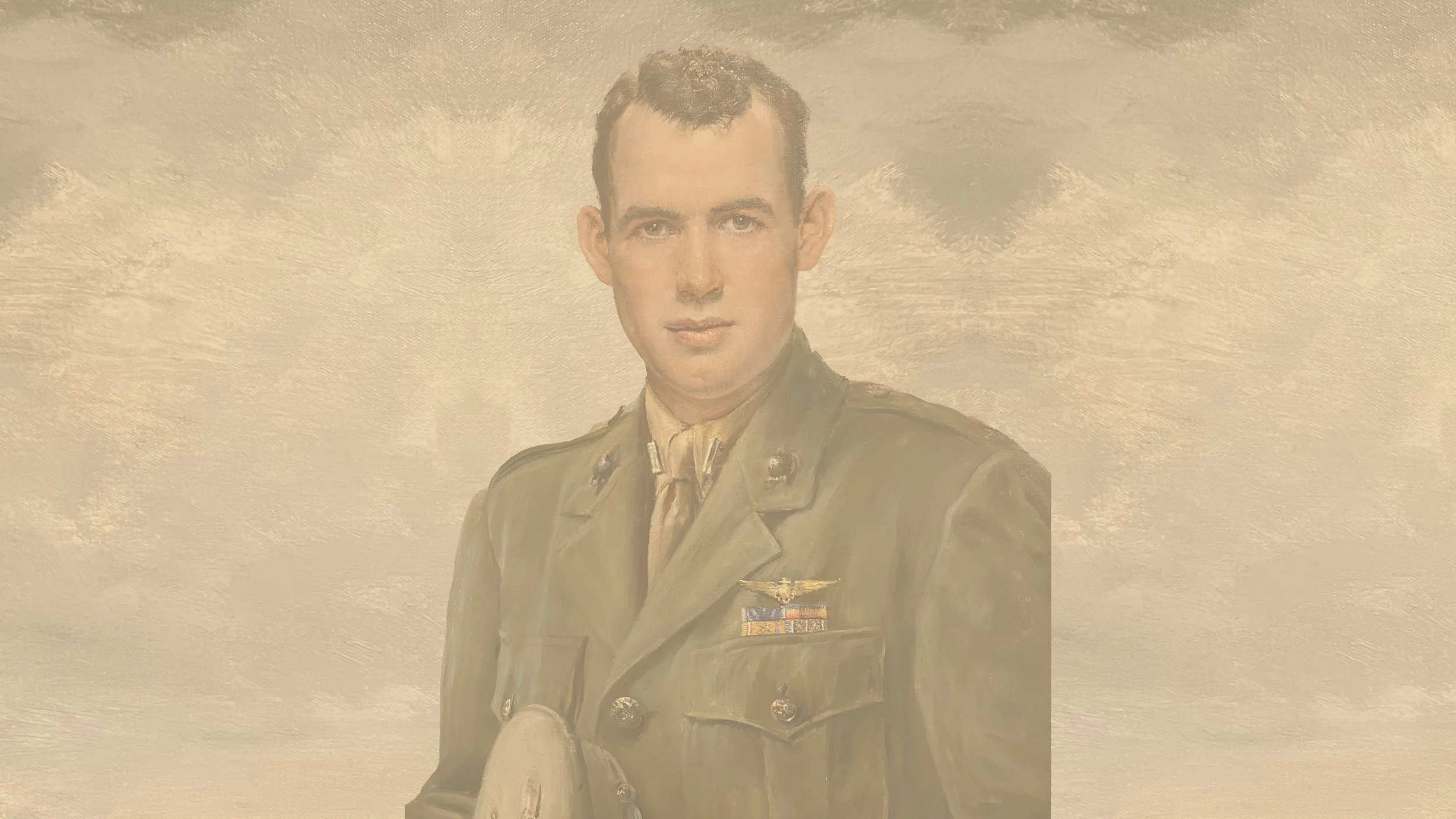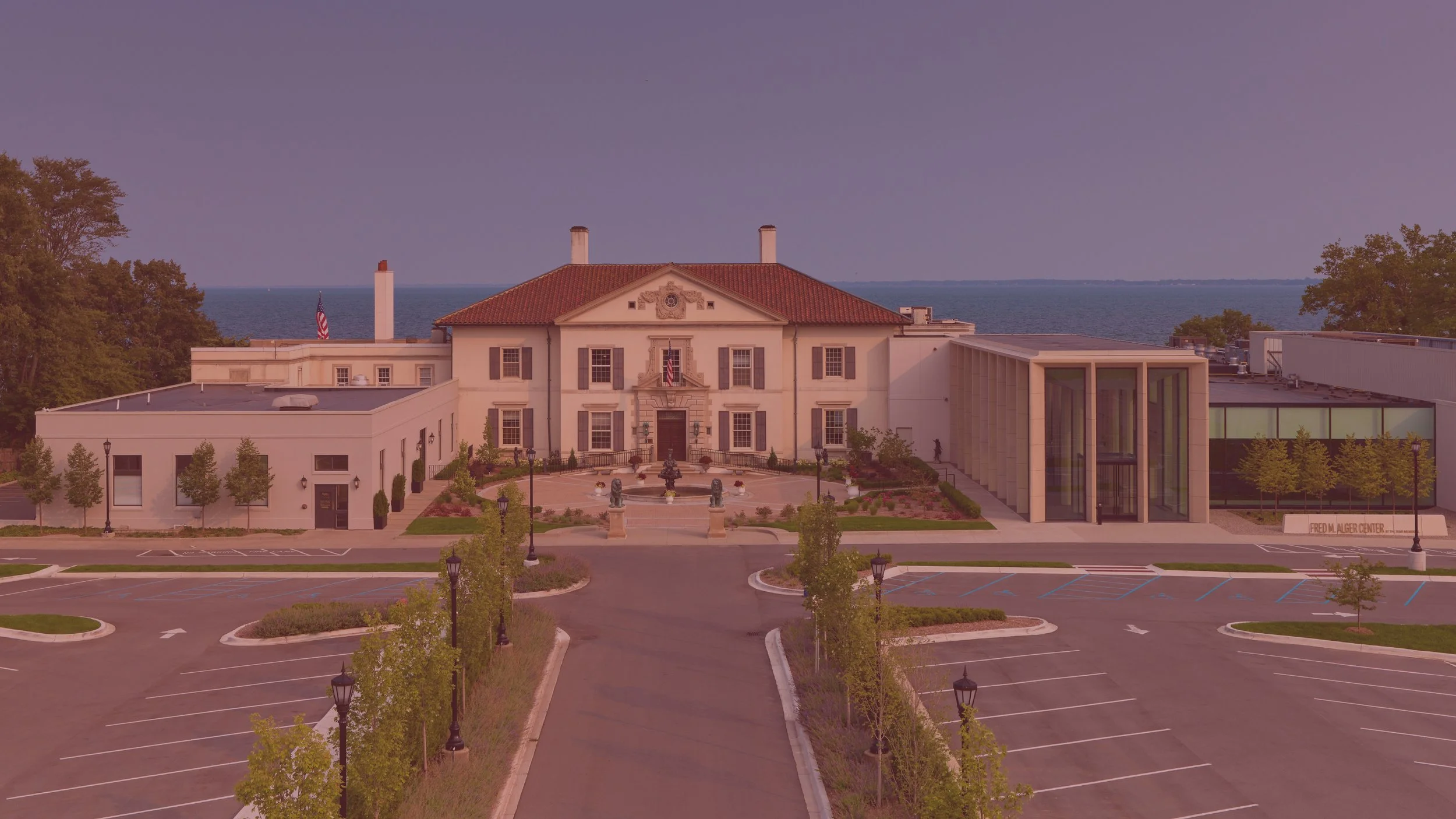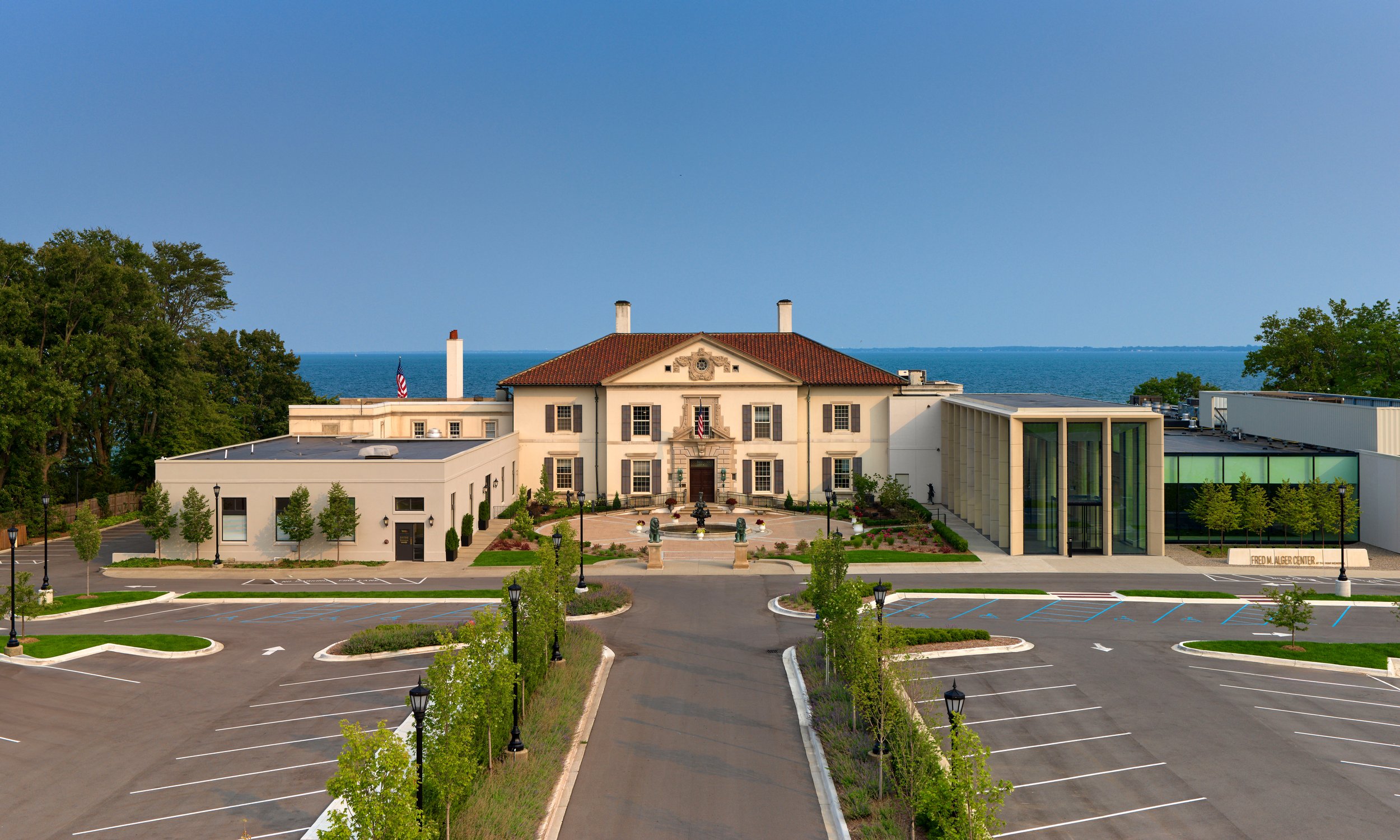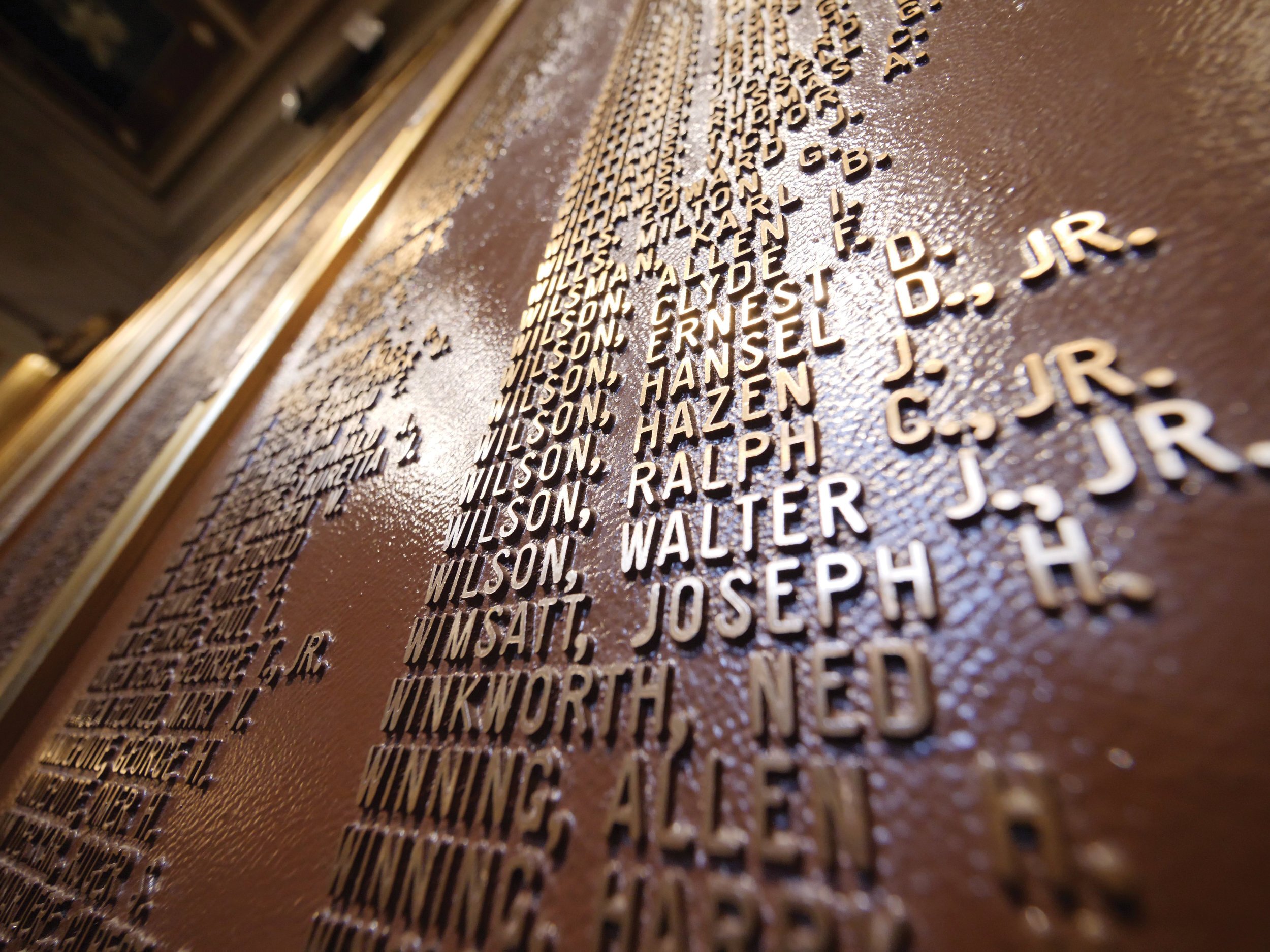
History
of The War Memorial
HISTORY OF THE WAR MEMORIAL
In 1910, Russell A. Alger, Jr. commissioned New York architect Charles A. Platt to design an Italian Renaissance–style home on the shores of Lake St. Clair. Known as The Moorings, the house was conceived as a seamless union of architecture and gardens, with terraced grounds designed to embrace the natural beauty of the lakefront. For two decades, it was the center of family life for Alger, his wife Marion, and their children—Josephine, Caroline (Fay), and Russell III.
Becoming a Place for All
After Russell Alger’s death in 1930, the family sought a way for the house to be used to improve the quality of life in the community. From 1936 to 1948, the building became a branch of the Detroit Institute of Arts. In 1949, it was dedicated by the newly formed Grosse Pointe War Memorial Association to a twofold purpose: to serve as a perpetual memorial to the 3,500 Grosse Pointers who served and the 126 who died in World War II; and it was to serve as a continuing center for educational, cultural, and charitable activities of the Grosse Pointe community. The War Memorial is unusual – some say unique – because of its dual use.
Honoring Service and Sacrifice
Bronze plaques near the grand staircase preserve the names of all Grosse Pointers who served in World War II. Smaller plaques in the entrance hall list those who served in the Korean and Vietnam conflicts and in Operation Desert Storm. In addition, there are plaques inscribed with names of our fallen heroes from WWII, the Korean, and Vietnam wars, and a meritorious service plaque honoring those killed during peacetime.
Growth and Renewal
Over the decades, the campus has expanded to better serve the community. In 1962, the Fries Auditorium, with its original lakefront ballroom and War Memorial Theater, was dedicated. The arts and education wing followed in 1977, later renovated to continue meeting the needs of future generations. Most recently, the Fred M. Alger Center, a modern hub for gathering and enrichment, opened in 2022.
Each addition reflects a commitment to carrying forward the original vision of The Moorings—a place where history, service, and community come together.
We continue this growth, with the support of the Michigan Labor and Economic Opportunity Community Museum Program and the State of Michigan’s America250MI Program, as we are embark upon the planning for our permanent museum. Led by a new collections manager, The War Memorial will inventory and catalog all War Memorial objects, upgrading object and archival storage, and establishing collections management policies. This foundational work will prepare us for the design and implementation of our exhibitions plan to preserve and celebrate Michigan’s military and civic history through the lens of the inimitable Russell Alger, Jr. family.
Stay tuned for future programming, and as we continue to preserve and share the stories that shape the Alger family, their contributions to the region, and the influence of our military community.
THE WAR MEMORIAL
HISTORICAL TIMELINE
The story of The War Memorial begins with a family home and a vision. Built in 1910 and dedicated as a living memorial in 1949, this lakeside mansion has evolved into a vibrant center for honoring veterans, enriching lives, and bringing people together. Our timeline traces this journey — past, present, and future.

1839 – 1900
1839 - Family patriarch, Russell A. Alger, was born in Medina, OH. Orphaned by age 12, he supported his two younger siblings and bartered for their education. A Civil War hor, he fought in over 66 battles, escaped as a POW, and rose to Brevet Major General. He later became a successful lumber baron, Michigan Governor, US Senator, and Secretary of War.
1876 - Russell Alexander Alger, Jr. was born in Detroit, the eldest son of Gen. Russell A. Alger and his wife Annette Henry Alger.
1896 - Russell Alger, Jr. married Marion Jarves. They had three children: Josephine, Caroline (Fay), and Russell Ill.

1901 - 1920
1902 – Russell Jr. co-founded Packard Motor Car Company with Henry B. Joy. They moved operations to Detroit in 1903 and commissioned Albert Kahn to design the landmark factory.
1908 – The Alger's began building their dream home, an Italian Renaissance villa designed by Charles A. Platt.
1909 – Russell Jr. and his brother, Col. Fred Alger, saw the Wright Brothers’ inventions as a promising investment. Russell partnered with the brothers, along with Cornelius Vanderbilt, II and August Belmont, Jr., to form Wright Brothers, Inc. That same year, Russell Jr. became the first official president of the Michigan Aero Club.
1910 – The family villa is completed and aptly named The Moorings. Situated on the banks of Lake St. Clair, the grand home garnered its name from the four candy-striped mooring poles installed in the lake to anchor the family’s seaplane and visitor's’ watercraft along the property’s shoreline.
1919 – Devoted to the estate’s gardens, Marion worked with renowned landscape architect Ellen Biddle Shipman to reshape Platt’s original garden design, gracing it with her beloved roses.

1921 - 1940
1921 – Russell Jr. was paralyzed in a horse accident, abruptly ending his flourishing business career.
1930 – Drawing on the nursing skills she had honed during World War I, Marion cared tirelessly for Russell Jr., but he ultimately succumbed to pneumonia complications following surgery. He was laid to rest at Elmwood Cemetery in Detroit, and not long after, Marion left The Moorings.
1936 – Marion offered the estate to the Detroit Institute of Arts as a museum annex. Though popular with the public, lack of city funding forced its closure in 1948, and the property returned to Marion.

1941 - 1970
1941 – During WWII, 3,600 Grosse Pointers served; 126 were lost. Among them was Josephine’s 25 year-old son, 2nd Lt. Henry “Hank” Chaney, killed at Guadalcanal in 1942. The Algers, like many families, were heartbroken.
1949 – After WWII, the Grosse Pointe community wanted a veterans memorial, but Marion wanted more - it had to benefit the public through education, culture, and service. With her nephew Alger Shelden’s help, her vision came to life. The estate was donated as a memorial and community center. In March, The Moorings became The Grosse Pointe War Memorial Association.
1962 – Marion Alger passed away leaving a legacy through institutions like The Neighborhood Club, Cottage Hospital, te first Grosse Pointe Public Library, the Neighborhood Thrift Shop, and the Grosse Pointe Garden center.
1962 – The Fries Auditorium opened, funded by a bequest from former associate headmaster of what would become University Liggett School, William Fries. It featured a theater and the Crystal Ballroom.

1971 - Present
1977 – Architect Marco Nobili designed a new north wing to expand arts and education space. It was extended in 1993 and then renovated again in 202 to include an art gallery and partner space.
2022 – The expansive new Fred M. Alger Center opened and was named to honor the Great-nephew of Marion and Russell Alger, Jr., Fred Moulton Alger, III, whose reconnection with The War Memorial and generous monetary gift made the new build possible.
2023 – The sculpture, Les Braves II: At Water’s Edge by Anilore Banon was installed on the lakeside lawn. A twin to Banon’s D-Day monument on Omaha Beach in Normandy, France, it reaffirms The War Memorial’s mission and legacy.




